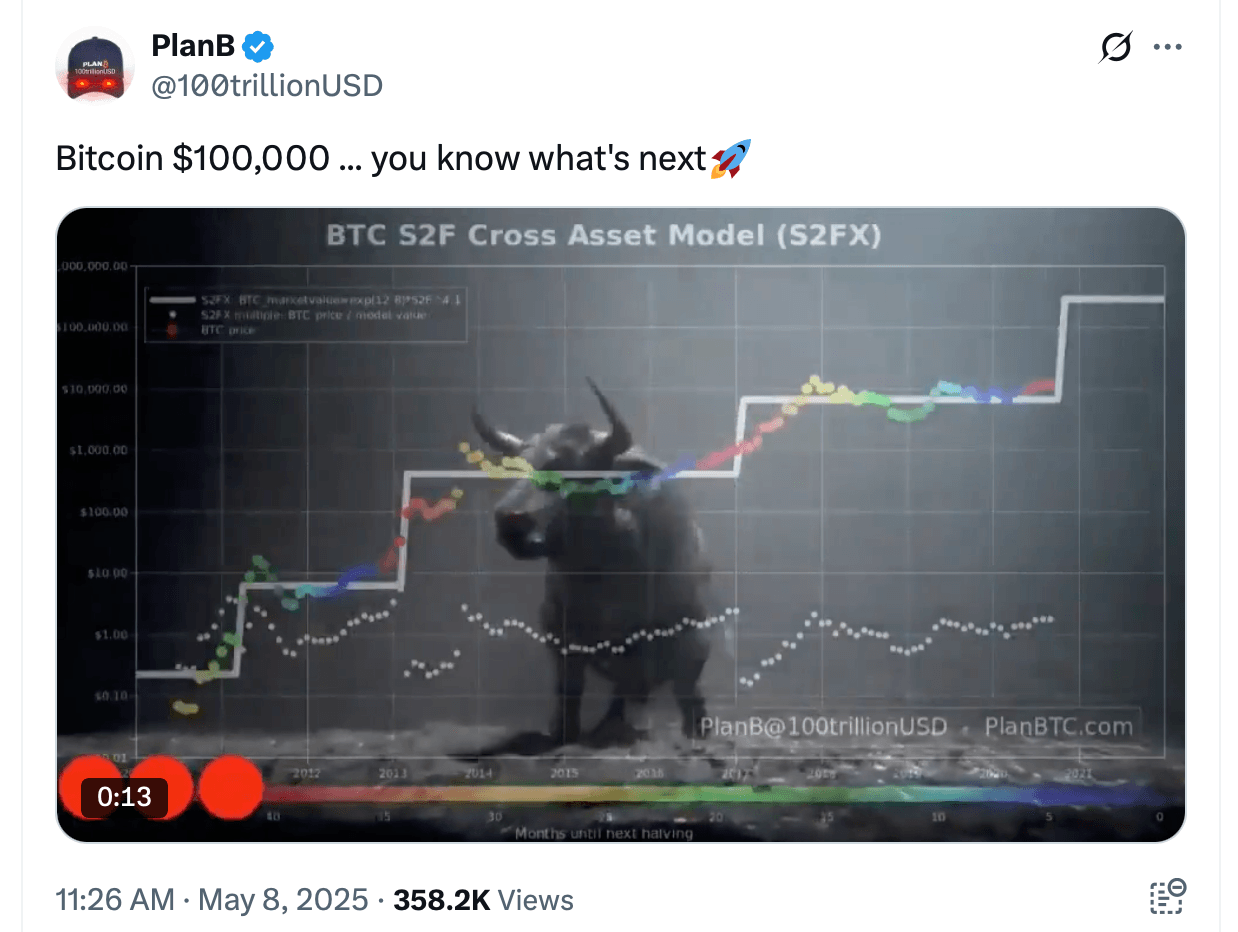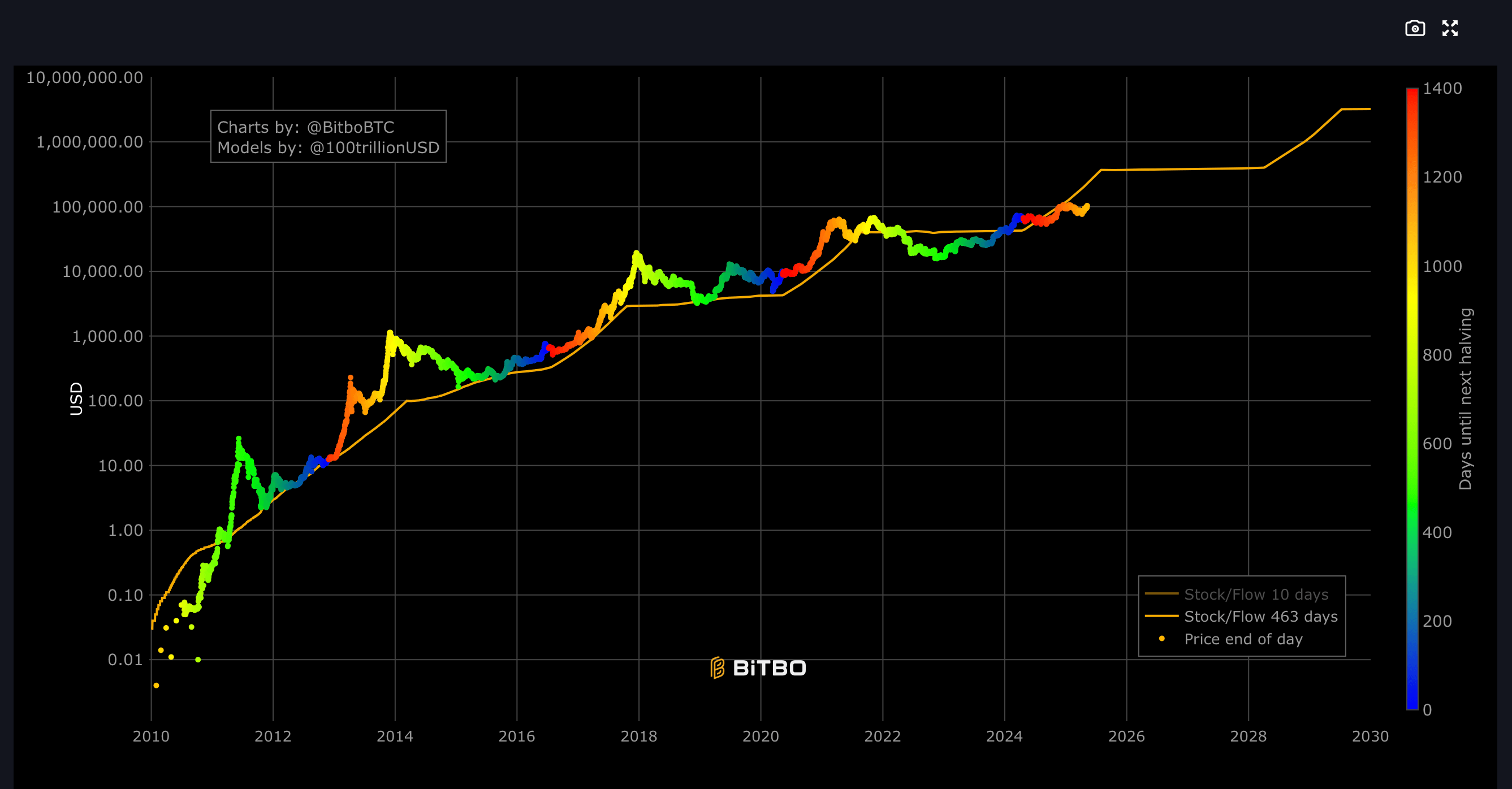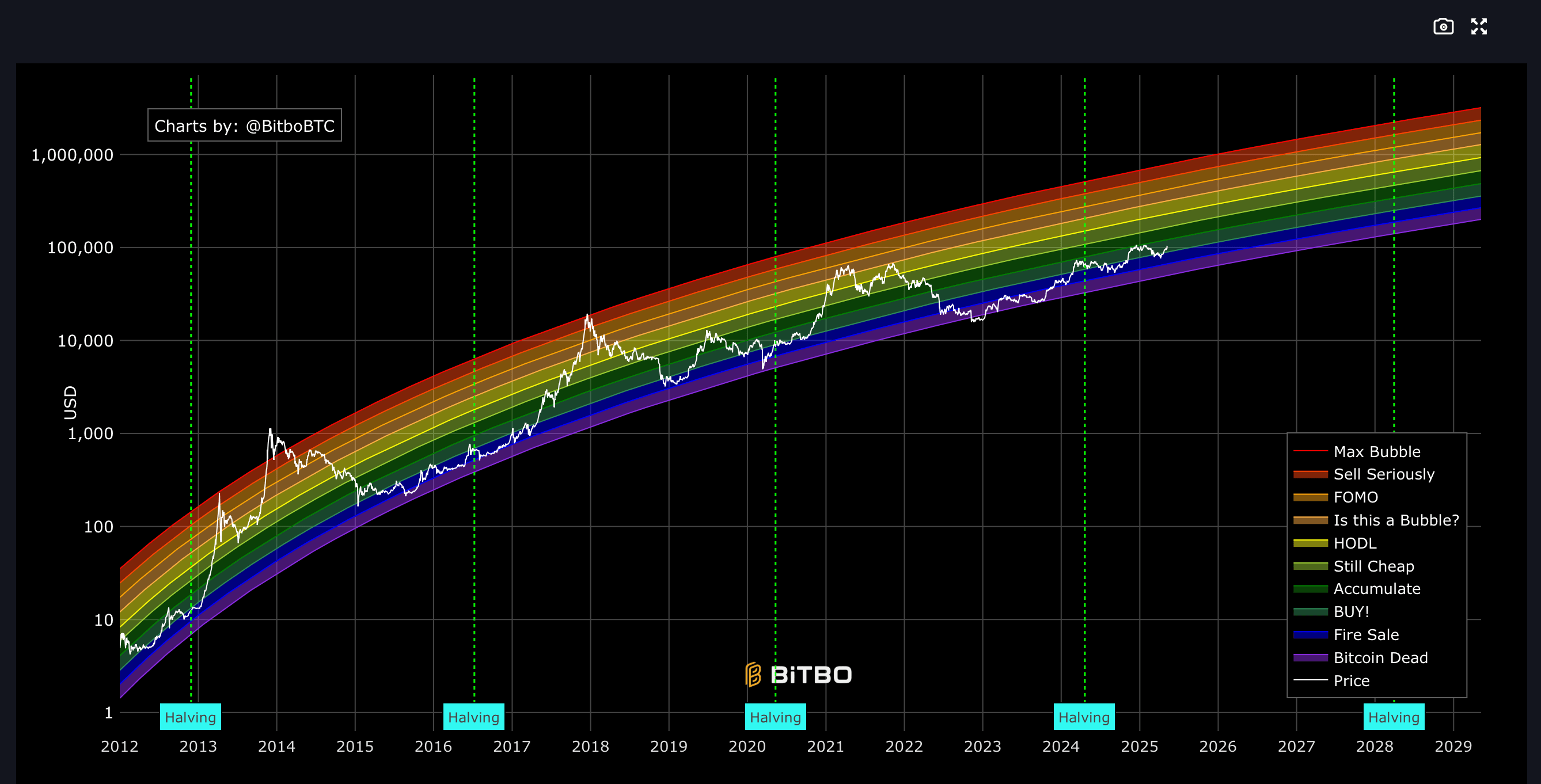At present, on Friday, May 9, bitcoin (BTC) trades at $103,046, and many observers foresee new record levels before year‑end. Market participants pore over charts with fervent scrutiny, while analysts consult predictive models to discern the asset’s next moves. This analysis examines two specific charting techniques and forecasting frameworks that might yield insight, even though these tools have been called imperfect in the past.

Plan B, the creator of the stock-to-flow (S2F) bitcoin price model.
Stock-to-Flow (S2F)
The Stock‑to‑Flow (S2F) model quantifies scarcity by relating existing supply (stock) to annual production (flow). For bitcoin, “flow” denotes coins newly mined each year. When bitcoin’s supply is halved every four years, flow diminishes, intensifying scarcity. The S2F framework posits that heightened scarcity leads to upward pressure on price.
At present, the price trajectory is shaded red to orange, signifying we just passed a halving event one year ago (red = 0 days to halving, blue = many days past). Historically, these phases after a halving spark vigorous price rallies over the following 12–18 months. The closeness of bitcoin’s market price to the S2F projection now implies the asset is adhering to the model more faithfully than in earlier cycles.

Stock-to-Flow (S2F) on May 9, 2025.
Projecting historical post‑halving S2F patterns forward, the model forecasts an exponential climb, potentially landing around $275,000 by late 2026. That trajectory reflects the scarcity thesis at the heart of S2F, in which each halving curtails issuance and, all else equal, should elevate the price. This dynamic has played out with exchange‑traded funds and firms like Strategy, formerly Microstrategy.
Although this model offers visual clarity and has shown historical consistency, it ought to be considered in concert with other metrics, as it does not factor in external market shocks or macroeconomic disruptions from say war or Trump’s trade decisions. Like all models and technical analysis, S2F has seen its fair share of criticism.
Rainbow Chart
According to the original Rainbow Chart, bitcoin’s price over the next 18 months is likely to progress from the “FOMO” band into the “Is this a Bubble?” zone. That trajectory begins just above $100,000 and advances toward a range of $290,000–$365,000 by late 2026. The colored bands represent long‑term logarithmic growth, implying that, should bitcoin follow its historical pattern, it will move through these sentiment thresholds before entering more speculative territory. The Rainbow Chart too has not been perfect and it should not be counted on against the backdrop of other market and other economic factors.

Original Rainbow chart on May 9, 2025.
It’s widely acknowledged that the Bitcoin Rainbow Chart has been edited and changed to mirror the market’s maturation and a more measured growth path. Early editions relied on scant data and presumed steep, speculative price climbs. As additional data emerged and returns tapered in subsequent cycles, the chart was adjusted with enhanced statistical techniques to avoid overfitting and align more closely with actual performance.
These refinements render the chart more plausible and less driven by hype, enabling users to form realistic expectations. Although many critics argue that the Rainbow and models such as S2F lack empirical grounding.
Taken together, the two approaches signal that bitcoin’s maturation is approaching another inflection, but they also remind observers that mathematics alone cannot capture every catalyst fueling digital asset markets. Incorporating liquidity shifts, regulatory stances and investor psychology will likely sharpen any forecast, allowing readers to treat colored bands and scarcity ratios as guideposts rather than ironclad fortune-telling devices for strategy.
Conversely, deviations from modeled paths may spark debate over data integrity, inspiring practitioners to refine methodologies or blend traditional finance tools with emerging onchain metrics before staking high-stakes positions during shifting phases.
免责声明:本文章仅代表作者个人观点,不代表本平台的立场和观点。本文章仅供信息分享,不构成对任何人的任何投资建议。用户与作者之间的任何争议,与本平台无关。如网页中刊载的文章或图片涉及侵权,请提供相关的权利证明和身份证明发送邮件到support@aicoin.com,本平台相关工作人员将会进行核查。




